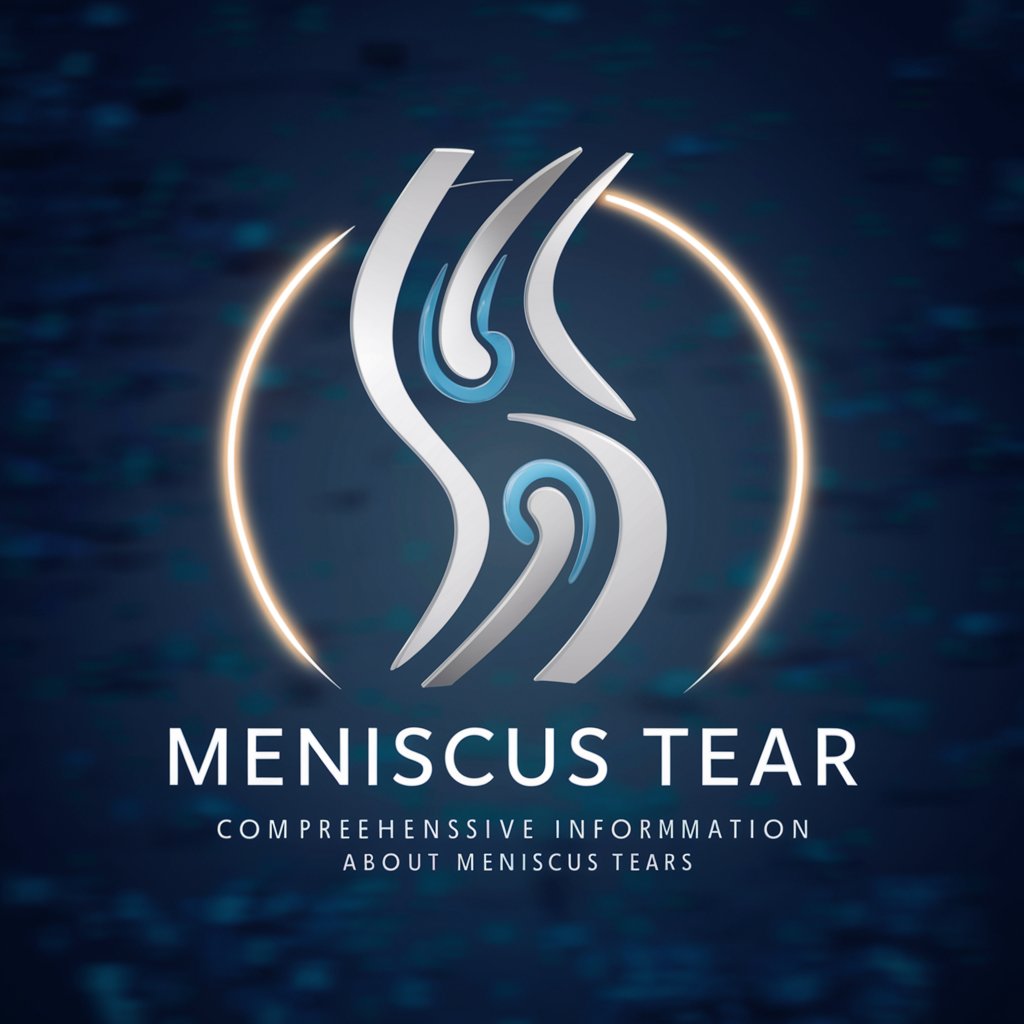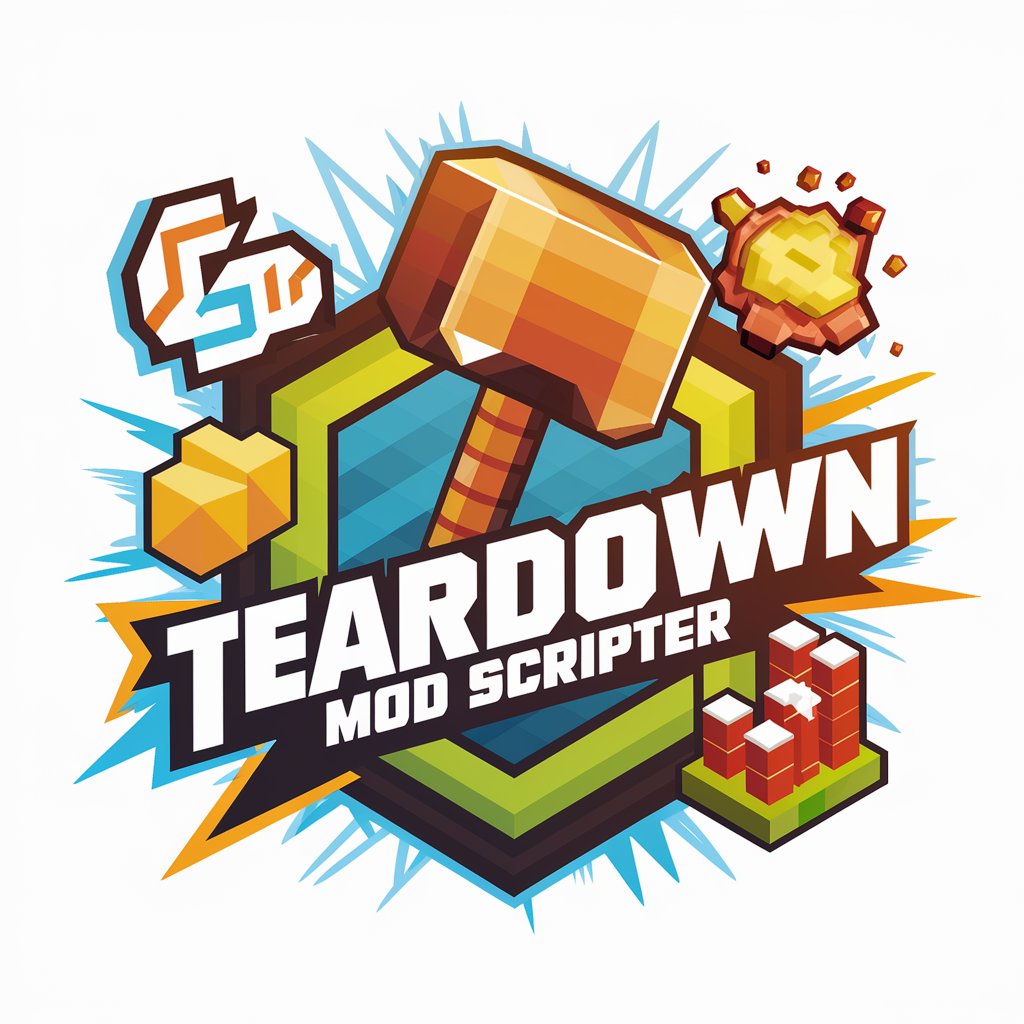Meniscus Tear - In-Depth Meniscus Tear Insights

Hello! I'm here to help you understand meniscus tears and their treatments.
Empowering Knee Health with AI
What are the common symptoms of a meniscus tear?
How is a meniscus tear diagnosed?
What treatment options are available for a meniscus tear?
Can you explain the recovery process for a meniscus tear?
Get Embed Code
Introduction to Meniscus Tear
Meniscus Tear, as a specialized AI, is designed to provide detailed information about meniscus tears, a common knee injury affecting the cartilage that stabilizes and cushions the knee joint. The primary purpose of Meniscus Tear is to educate individuals about the nature of meniscus tears, including symptoms, diagnosis, treatment options, and prevention strategies. By breaking down complex medical information into understandable terms, Meniscus Tear helps users grasp the essentials of meniscus tear concerns, guiding them through recovery processes and preventive measures. For instance, it can explain how a twisting movement while the foot is planted might result in a meniscus tear, emphasizing the importance of proper technique in physical activities to prevent such injuries. Powered by ChatGPT-4o。

Main Functions of Meniscus Tear
Educational Resource
Example
Explaining the differences between a lateral and medial meniscus tear, including their implications for knee stability and mobility.
Scenario
A user recovering from knee surgery seeks information on how their meniscus tear affects their recovery timeline and rehabilitation exercises.
Guidance on Symptoms and When to Seek Medical Help
Example
Identifying symptoms like swelling, stiffness, and the inability to move the knee through its full range of motion, and advising on the urgency of consulting healthcare professionals.
Scenario
Someone experiences knee pain after a fall during a soccer game, wondering whether it's a meniscus tear or a less severe injury.
Prevention Tips
Example
Offering advice on strength training exercises for the muscles around the knee to support and protect the meniscus from injury.
Scenario
An avid runner looks for ways to adjust their training regimen to reduce the risk of meniscus tears.
Ideal Users of Meniscus Tear Services
Individuals Recovering from Meniscus Tears
Those undergoing rehabilitation for meniscus tear injuries would find Meniscus Tear invaluable for understanding their condition, managing pain, and facilitating recovery through informed decisions on exercises and activities.
Sports Enthusiasts and Athletes
Athletes and physically active individuals seeking to prevent meniscus injuries would benefit from Meniscus Tear's prevention tips and strategies, enhancing their training and performance while minimizing the risk of knee injuries.
Healthcare Professionals and Students
Medical students and professionals looking for a quick reference or to reinforce their understanding of meniscus tear-related conditions can use Meniscus Tear as a supplementary educational tool.

How to Use Meniscus Tear
Start with YesChat
Visit yeschat.ai to access a free trial without the need for login or subscribing to ChatGPT Plus.
Identify Your Needs
Determine whether your inquiry relates to understanding, treating, or preventing meniscus tears to direct your questions effectively.
Ask Your Questions
Submit your questions about meniscus tears directly, focusing on symptoms, treatment options, or prevention techniques.
Interpret the Guidance
Review the provided information for educational purposes and consider how it applies to your specific situation.
Consult Healthcare Professionals
For personalized medical advice, always follow up with healthcare professionals, using the information as a supplementary resource.
Try other advanced and practical GPTs
Teardown Mod Scripter
Powering your creativity in Teardown modding.

Rotator Cuff Tear
Empowering your shoulder health with AI

Ligament Sprain and Tear.
Empowering injury understanding with AI

Teardown.ai
Deciphering Tech Companies with AI

Muscle Strain and Tear
Empowering your recovery with AI-driven advice.

SanctionsGPT
Navigate Sanctions Smartly with AI

Anterior Cruciate Ligament Tear (ACL)
Empowering ACL tear understanding with AI

TentGPT
Elevating Camping to Luxury

Mystic Myco
Crafting Psychedelic Visions with AI

Stock Market
Empower Your Investments with AI

Stock Sage
Empowering Investments with AI

AI Interaction Coach
Empowering Ethical AI Conversations

Meniscus Tear Q&A
What is a meniscus tear?
A meniscus tear is a common knee injury involving a tear in one of the knee's cartilage pieces, which can affect stability and motion.
How can I tell if I have a meniscus tear?
Symptoms of a meniscus tear include pain, swelling, stiffness, a popping sensation during the injury, and difficulty bending and straightening the leg fully.
What treatment options are available for a meniscus tear?
Treatment can range from rest, ice, and physical therapy to surgical repair, depending on the tear's severity and the individual's activity level.
Can a meniscus tear heal on its own?
Some meniscus tears, particularly those in the outer portion where blood supply is better, can heal on their own with appropriate care and rest.
How can I prevent meniscus tears?
Preventive measures include maintaining muscle strength, flexibility, using proper technique during sports and activities, and avoiding sudden increases in training intensity.
